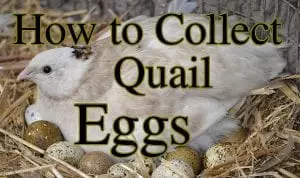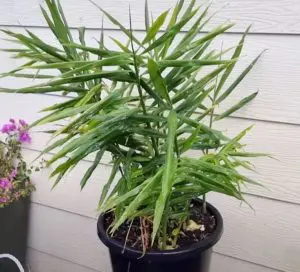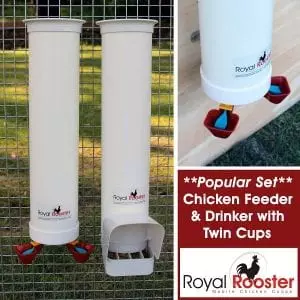There’s so much to learn as a beginner gardener…the how, the when, the where, the why?! Even if you’re experienced, there are new techonologies popping up, new products, and new ways of doing things.
To make best use of things and maximise our productivity, we need to know what things are and how they work.
To that end, here is a dictionary of important terms used in gardening. It covers everything except plants!
Aeration – Any method of loosening soil or growing medium to allow air to circulate through it.
Annual – A plant that grows, fruits (or flowers), & produces seed all in one season. It must be planted each year. Some plants known as annual may act as perennials in warm climates.
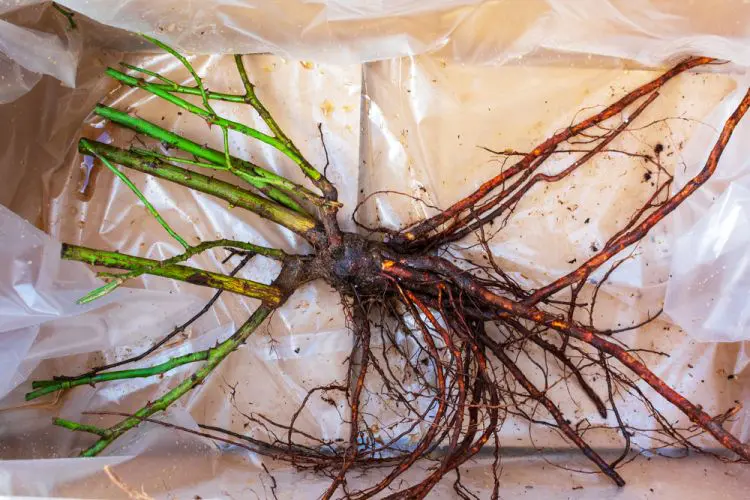
Bare Root – As the name suggests, these are plants that are sold with little to no soil around the roots. They look pretty much dead but they aren’t. Things like roses, asparagus crowns and fruit trees are sold as bare root plants. Often seen with plants sold online.
Beneficial Insect – An insect that benefits your garden by eating or laying its eggs in other insects, thereby controlling their population. They usually help control populations of insects that destroy your garden, so they play an important role.
Biennials – have a two-year life cycle. They grow leaves the first year, and flower, seed, and die in the second year. Foxgloves are biennial.
Bolt – A term used to describe a plant that has gone to seed prematurely. Think of coriander bolting in hot weather.
Clay Soil – Soil that is composed of many tiny plate-like soil particles that can compact with time. Once compacted, they form a hard, solid mass that makes shovelling & digging difficult and laborious. Clay soil almost always has poor drainage.
Companion Planting – The act of placing sympathetic plants near or next to each other, so that both may derive benefit. A well-known example is tomatoes and marigolds. Marigolds are known to exude a compound which repels nematodes in the soil, which would otherwise target & destroy tomatoes.
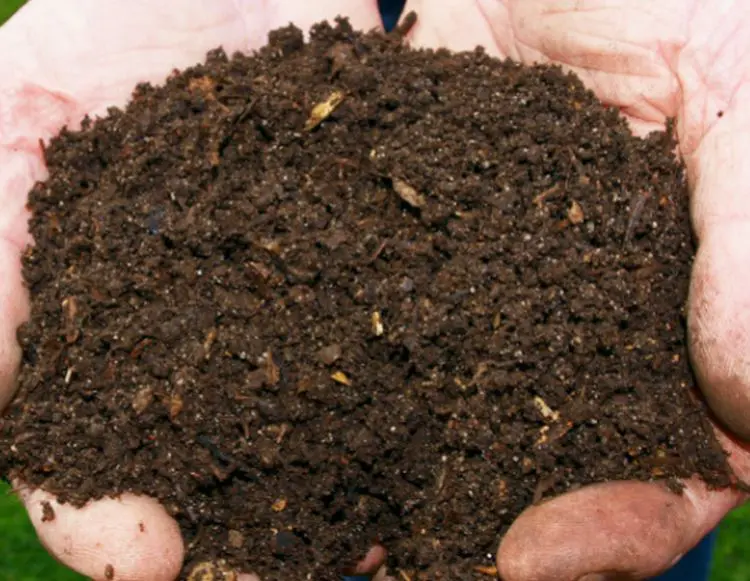
Compost – Compost is a soil-like substance that is the result of decomposed organic waste. You can compost your own plants and kitchen scraps at home to make it. Compost is high in organic matter, an excellent fertiliser, and capable of improving almost any soil. To see how to make compost, click here.
Controlled Release Fertiliser – Fertiliser that comes in pellets. It is an improved version of slow release fertiliser. The fertiliser is released based on soil temperature rather than microbe action. It tends to be more exact than slow release fertiliser, and therefore better for the plants.
Cover Crop – Vegetation grown to protect and build the soil during an interval when the area would otherwise lie fallow. Cover crops are usually dug back into the soil once finished. In this way they are used to add nutrition and organic matter into the soil for the benefit of future crops.
Cultivar – Often confused with ‘variety’, but they are not quite the same thing. Varieties often occur in nature: they are stable, true-to-type, and their seeds will produce the same fruit next season. Different types of tomato seedlings you might buy are varieties. A cultivar, as the name suggests, has been cultivated by humans. They may not be stable or naturally occurring. If you let two varieties of tomato cross pollinate in your garden at home, the result would be a cultivar.
Cuttings – and slips are the same thing: pieces of plants used for asexual propagation.
Cutting – A vegetative method of plant propagation whereby a piece of plant leaf, stem, root or bud is cut from a parent plant. It is then inserted into a growing medium or water to form roots, thus developing a new plant.
Damping off – The decay of young seedlings at ground level following fungal attack. Often exacerbated by over watering, ‘damping off’ is caused by a group of pathogens that fester in damp conditions and kill off seedlings. This can happen during indoor sowing.

Dappled Light – Areas where there is a mixture of sun and shade, generally because a large tree is overhead. Specifically, dappled light occurs when sunlight falls through the leaves of a tree, for example, in a rainforest canopy. Understorey plants like Australian finger limes enjoy dappled light. Also called dappled shade.
Days to maturity – The number of days it takes a plant—with the right conditions—to reach biological maturity. This can be a tricky one, so make sure to read the fine print. Some resources will mean from seed to maturity, others will mean from seedling to maturity. Check with your seed company to see which definition they are using.
Dead-head – To remove spent blooms and seed heads from a plant, in order to keep plants blooming longer. Dead-heading stimulates new growth.
Deciduous – Trees or shrubs that lose their leaves in fall and winter.
Dioecious – Plants that house their male and female flowers on separate plants are dioecious. Examples include holly, kiwifruit, and asparagus.
Direct sowing – Means sowing the seeds directly into their permanent position. Whether it’s in the ground, in a pot, or in a raised bed, these plants won’t be moved.
Drought Resistant – Plants that can withstand periods with little to no supplemental water once planted and established in the landscape. All plants will need to be watered while getting established though: annuals and perennials need 2 to 3 weeks to establish, shrubs and trees need a year to become established. Often used interchangeably with drought tolerant- although their definitions are different.
Drought Tolerant – Plants that deal with severe drought on a regular basis, and recover from repeated wilting. Agaves and ponytails are good examples. Note that all plants need water to become established- annuals and perennials might need 2 or 3 weeks, shrubs and trees a year or more.
Exposure – The optimum amount of sun or shade each plant needs to thrive
- Full Sun – 6 or more hours of direct sun a day
- Partial Sun or Partial Shade – 4 to 6 hours of direct sun a day
- Full Shade – less than 4 hours of direct sun a day
- Dappled Shade – areas where there is a mixture of sun and shade, generally because a deciduous tree is nearby. Dappled shade is similar to partial shade.
- Deep Shade– less than 2 hours of dappled shade per day

Fertilising – To add nutrition to your plants using either commercial or non commercial fertilizers or compost.
- Controlled Release Fertiliser – Also called time release fertiliser. This fertiliser comes in pellets and is an improved version of slow release fertiliser. Fertiliser is released based on soil temperature itself (not microbe action) and tends to be more exact than slow release fertiliser.
- Heavy Feeders – Plants that need a lot of fertiliser for optimal performance. Regular applications of fertiliser are necessary for continued performance.
- Light Feeders – Plants that do not need a lot of fertiliser for optimal performance. Over-feeding light feeders can cause toxicity, and the plant will eventually die.
- N-P-K – Ratio of nitrogen to phosphorous to potassium in a fertiliser. These are the main nutrients required by plants.
- Slow Release Fertiliser – Fertiliser that comes in pellets and is slowly released to the plant. It is based largely on microbes, whose activity varies depending on soil temperatures.
- Time Release Fertiliser – Also called controlled release fertiliser. Fertiliser that comes in pellets and is an improved version of slow release fertiliser. Fertiliser is released based on soil temperature rather than microbe action, and tends to be more exact than slow release fertiliser.
- Trace Elements – Nutrients that plants need in small amounts. Common trace elements include boron, copper, iron, manganese, molybdenum, and zinc. These elements are usually included in most commercial fertilisers.
- Water Soluble Fertiliser – Fertiliser that either comes in a liquid form or as crystals that dissolve in water.
Germinate – The beginning of growth in seeds, the action of sprouting, budding or shooting above the soil. The breaking of dormancy in seeds or the sprouting of pollen grains deposited on a stigma.
Greenhouse – A greenhouse is an outdoor structure, usually permanent, with walls and a roof. It is constructed specifically to grow plants which require a controlled climate. Most commonly used in cold climates where plants and seedlings are frost-sensitive. Greenhouses in cold climates mostly have transparent walls which are made from glass or perspex. These structures range in size from small sheds to industrial-sized buildings. A miniature greenhouse is known as a cold frame.
Green Manure – A crop that is grown specifically to be incorporated into the soil to increase soil fertility or organic matter content. Usually turned over into the soil a few weeks before new planting begins. Read more about green manures in Australia here.

Guttation – This is an interesting word, but you won’t hear it too often. Guttation is when water seeps out of a plant’s leaves. It can happen after watering, but is more likely after heavy rain, when the roots send water up through the plant and out through the leaves.
Habit – describes the general structure of the plant, the way it grows, or its natural shape.
- Climbing – Plants that climb fences or other structures by themselves. They use their roots, tendrils or stems to grip on to support structures, Vines are climbers: think ivy, cucumbers, loofah, etc.
- Clump Forming – Plant that forms clumps of foliage, often spreading to form other clumps close by. Lavender, mondo grass and society garlic are good examples.
- Mounded – Plants with a rounded appearance, they are usually wider than they are tall.
- Trailing – Plants that trail along the ground or out of pots, but do not root at nodes along the stem, such as nasturtiums.
- Upright – A plant that is taller than it is wide. They usually have fairly straight edges and a somewhat spikey appearance.
- Spreading – Plants that grow low and spread along the ground, rooting at nodes along the stem.
Hair Cut – Just like your hairdresser does to you, you can give your plants a hair cut. A haircut will neaten the plant and encourage branching. Using a sharp pair of scissors or shears to trim the ends of the branches off a plant, cutting an even amount off all parts of the plants. If there are long pieces trailing or sticking out these would be trimmed back more so that at the end the plant is nicely even.
Hardy – When we say a plant is ‘hardy’ we usually mean that it can stand up to low temperatures and survive.
- As a rough guide, we say that a hardy plant can survive a temperature of –15°C
- Plants that are frost hardy can survive a temperature of -5°C
- Those that are half hardy can only stand temperatures as low as 0°C
- A plant described as tender will not survive temperatures below +5°C
Harden Off – A process whereby a young plant is gradually introduced to either cold temperatures or full sun, giving it a chance to build tolerance to a more extreme temperature. Hardening off will generally take several weeks, and is done gradually.
Head-space – Space left between the top of the soil and the top of the container. This space helps keep soil from washing out and helps channel water into the container when watering.
Heat Tolerant – Plants that flourish despite hot temperatures. Edibles that are heat tolerant include malabar spinach, okra, and chillies. Agaves, ponytails and yuccas are ornamental examples.
Heavy Feeders – Plants that need a lot of fertiliser for optimal performance. Regular applications of fertiliser are necessary for continued performance.
Herbs – are plants of which the leaves, stems, flowers, or roots can be used for food, flavour, scent, or medicinal purposes.

Herbaceous plants – by definition are flowering perennials that do not develop woody stems. Many herbs are herbaceous plants, but not all. Yarrow and tansy are examples of herbaceous plants. Rosemary and lavender both develop woody stems, so, by this definition, they are not herbaceous but they are herbs.
Hybrid Vigour – Sometimes with F1 hybrids, you will find that a particular plant grows exceptionally well. This is a phenomenon called hybrid vigour. It’s really tempting to save the seed & re-grow that plant…but it won’t work, because hybrids (i.e. anything grown from F1 seed) won’t be the same next time around.
Hydrophobic – usually mentioned in relation to soil. Hydrophobic soil is soil whose particles repel water. This usually happens when a soil has been left to dry out too much.
Light Feeders – Plants that do not need a lot of fertiliser for optimal performance. Overfeeding light feeders can cause toxicity. Leaves will turn brown and the plant will slowly die.
Micro-climate – refers to a small area whose climate differs to that surrounding it. Effectively, it’s a climate within a climate. This may be a spot within a garden, or a front yard on a street. Some examples would be a place where water collects during rain, a spot that remains warmer in the winter, a corner of a garden bed that is sheltered from the wind, etc.
Monoecious – plants that have male and female flowers in separate structures on the same plant. Examples include squash and cucumber.

Mulch – A substance applied to the top of the soil around plants. It can be organic or inorganic and may serve several different purposes. Mulch helps retain soil moisture, decreases weeds, reduces erosion, helps cool plant roots, adds organic matter (provided organic mulch is used), increases the attractiveness of the landscape, and protects plants from adverse winter conditions. Sugar cane, lucerne and wood chip are commonly used.
Needs Good Drainage – These plants do not do well if they remain wet for extended periods of time and should be planted in locations or containers where water drains quickly. Plants that require good drainage cannot cope with wet feet (see below). Citrus trees in pots are a good example.
Part-sun or Part-shade – 4 to 6 hours of direct sun a day.
Perennial – Plants that live for many years. Some will flower or fruit the first year they are planted, and some will need time to mature before becoming productive. While perennials are generally very long lived, some will survive only a few years. These are called short-lived perennials.
pH – A measure of how acidic or alkaline your soil is. A pH of 7 is considered neutral. Acidic soils have a pH less than 7. Alkaline soils have a pH greater than 7. Most plants prefer a pH between 6 and 7. Some plants, called acid loving plants (such as azaleas, blueberries & citrus), will take a pH between 5 and 7. pH is important because plants don’t like soils that are too acidic or basic. Soil pH can be adjusted using amendments.
Pinching Out– Removing a portion of the plant, often just the very tip of the shoots, to encourage branching. This is usually done by using your finger nails to pinch off the newest growth but scissors, pruning shears, or a knife can also be used. You’ll often hear the term ‘pinching out suckers’, particularly in relation to tomatoes.
Potting mix – The medium used in pots and containers instead of garden soil. It’s soil-less, containing other lightweight, organic ingredients such as peat moss, perlite, vermiculite, sand, bark, or coconut coir. Some potting mix is organic and suitable for growing edibles. It may include wetting agents and fertiliser.
Pricking out – the transplanting of small seedlings. This is usually done once their first set of true leaves has grown. It normally involves putting them into individual plugs or very small pots, and should be done by holding their leaves rather than their stems.
Prune – Using secateurs, pruning shears, scissors, a knife, or loppers to remove part of a plant in order to shape or rejuvenate it. Pruning is much more drastic than pinching. Pruning is mostly done on shrubs, trees, and perennials.

Raised beds – A garden bed filled with soil for growing plants which is raised up off the ground. It can be made from a variety of materials, such as wood, steel, and plastic. Heights may vary from just a few inches up to waist height. You can view our numerous videos on raised bed gardening here on our youtube channel.
Root Bound – Also called ‘pot bound’, this is when a plant has been in a pot for too long & its roots have grown so much that they circle around the edges of the pot. You may be able to see roots growing out from the drainage holes if a plant is root bound.
Root Rot – Fungal disease caused by several different types of fungi that causes the roots of a plant to turn brown, grey, and/or slimy. It impairs a plants ability to take up water and will often kill plants that are infected. Root rot is often caused by chronic over-watering. The most common visible symptom of root rot is a plant that is wilting even though the soil is wet.
Sandy Soil – Sandy soil is composed of many irregular to rounded tiny grains of sand, as opposed to the many tiny plate-like soil particles that make up a clay soil. Sandy soil drains very quickly and cannot retain nutrients.
Saturation – This is when the entire root zone of a plant is moist after watering.

Scorched – When plants receive too much sun, pesticide or fertiliser, the foliage may look brown or yellowish, or even develop brown dead patches. The foliage in these cases is said to be scorched.
Seeds
- Open-pollinated – are traditional seeds that grow plants just like their parent plants. In this way they said to ‘breed true’. These seeds can be saved to grow the plant again. Heirlooms are open-pollinated.
- Hybrid – also known as F1. An F1 hybrid is simply the result of breeding two different strains of a variety to produce a third variety. The term ‘F1’ just stands for Filial 1 or ‘first children’. You should not save seeds from F1 plants, as they are unstable so won’t be true to the parent plant. You will not get the same results from a second planting.
- GMO – genetically modified seeds (GMO) have been artificially produced in a laboratory via genetic engineering. They may combine plant, animal, bacterial and viral genes that would not otherwise occur together.
Seedlings – a very young plant which has been grown from seed. Usually a few days or a few weeks old.
Tender Perennial – Plants that are perennial in warm locations but cannot withstand a hard freeze. These plants are often treated as annuals in cold climates or may survive if grown in a cold frame or greenhouse.
Thinning Out – This is done when seeds germinate too close together. You need to remove some of the seedlings to allow the healthiest one(s) space to grow. The weaker seedlings may be kept and re-planted or simply discarded.
Tilth – Describes the general health of the soil including a balance of nutrients, water, and air. Soil that is healthy and has good physical qualities is in good tilth.
Topsoil – the upper layer of soil that you plant in. It varies in depth from place to place, but will always be less than a foot deep, and can be as little as 5 cm (2 inches) deep.
Trace Elements – Nutrients that plants need in small amounts. Common trace elements include boron, copper, iron, manganese, molybdenum, and zinc. Trace elements can be bought as a stand-alone product, but are included in most all-purpose fertilisers.

Variegated – Plants whose foliage has different colours throughout the leaves. The colours are usually random. Coleus, crotons, caladiums, pothos and syngoniums are well-known for their variegation. Many herbs have variegated varieties too, such as thyme, sage and mother-of-herbs. New vegetable varieties with variegated leaves include kale, cabbage and tomatoes.
Water Plant – Plants that can grow on pond edges or in ponds or streams. Also called aquatic plants, some may specifically prefer running or stagnant water. Common examples are watercress, kang kong and water lillies.
Water Soluble Fertiliser – Fertiliser that either comes in liquid form, or as crystals that dissolve in water. The name is self-explanatory.
Water Wise – A landscape that manages water sensibly, using moisture zones and managing water use. Includes other aspects such as thoughtful plant selection, mulching, and minimal grass areas.
Wet Feet – When the soil in a container or the landscape stays wet, plants may be referred to as having wet feet. Conversely, the roots on some plants don’t like to be constantly wet and we might say that such plants don’t like to have wet feet.
Xeriscape – a landscape style that employs drought-resistant plants to help conserve water.

